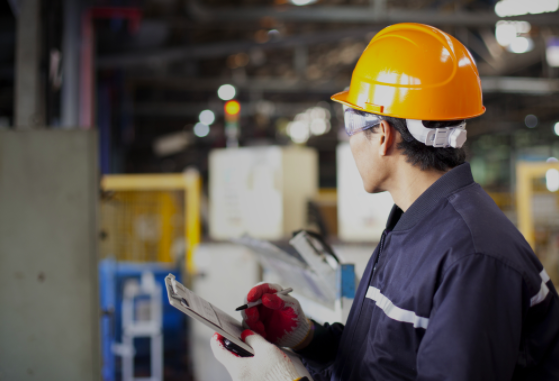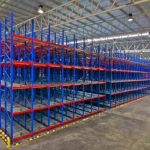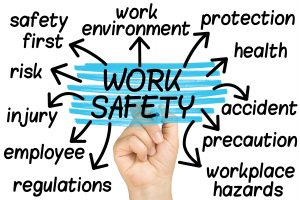
The Health and Safety Executive (HSE) couldn’t exist without hard-working inspectors and safety professionals of all kinds, so their stance on racking protectors matters a lot.
Ever since its formation in 1974, HSE has helped to improve working conditions for millions of British people. As a result, workplace fatalities have fallen by 85%. However, the organisation recognises that there’s still more work to be done, and it’s because of this belief in constant improvement that HSE’s standards are so high.
HSE’s stance on racking protectors is an example of its high standards. While these metal plates are designed to protect a racking system, they can actually make a workplace less safe when not used properly.
Some Background on HSE Inspectors
Typically, a HSE inspector is someone with a background in engineering or applied sciences. This might be through a university degree, some other kind of formal education, relevant work experience, or an apprenticeship.
The job is a 9-5 one, but HSE inspectors might have to work on weekends in the event of some kind of emergency. Most HSE inspectors work for HSE, but others might work for local councils or for large organisations. Due to government cuts, the number of HSE inspectors is decreasing. At the same time, the number of SEMA Approved Racking Inspectors is increasing — albeit slowly.
SEMA Approved Racking Inspectors (SARIs) are HSE inspectors of a sort. HSE recommends a racking inspection from a SARI at least every 12 months and it labels both SARIs and their inspections as “expert”. However, SARIs are not employed by HSE, a local council, or a large organisation. Though their expertise is recognised by HSE, many SARIs are freelancers.
What SARIs share in common with HSE inspectors are their backgrounds, their knowledge, and their stance on racking protectors. The difference between HSE inspectors and SARIs is that HSE inspectors operate under fee for intervention scheme and SARIs don’t.
In other words, if there is anything wrong with your workplace, your fine will include a charge designed to recover the costs lost from inspecting your workplace. This change in rules has also been brought on by government cuts as a cost-saving measure, and the result has been a sharp increase in fines.
By contrast, a SARI’s job isn’t to fine people. At Storage Equipment Experts, if we find something wrong with your workplace during an inspection, aim is to help you. We want to make sure that know exactly what’s wrong with your storage system so that you can fix it.
What Are Racking Protectors?
Both HSE inspectors and SARI inspectors sing from the same hymnbook when it comes to warehouse safety, and this is especially the case with regards to racking protectors. These protectors are often installed next to an upright. At the 2015 SEMA Safety Conference, SEMA made the SARI and HSE stance on racking protectors clear.
Their aim is to protect a racking system, but a common issue with them is overreliance. Too many warehouse workers treat racking protectors like goggles. Just as goggles are there to protect your eyes from the snow which will inevitably fly into your face, so too are racking protectors their to protect a racking system from inevitable collisions.
This attitude is wrong. Collisions with racking protectors are not inevitable, and they should be avoided as much as possible. Operating under the assumption that a racking protector will be used is the wrong idea.
Instead, warehouse workers should imagine racking protectors like bike helmets. Just as bike helmets are designed to protect someone’s head in the event of a crash, so too are racking protectors designed to protect a racking system in the event of a collision.
Both pieces of safety equipment are very important, but they are there as a last resort. The best form of protection for cyclists against crashing isn’t the helmet, but road safety awareness. Equally, the best form of protection for a racking system isn’t the racking protector, but racking safety awareness.
To make sure that you are using your racking protectors properly and to avoid a fine from HSE inspectors.
And contact Storage Equipment Experts today for a racking inspection by a SEMA Approved inspector!





